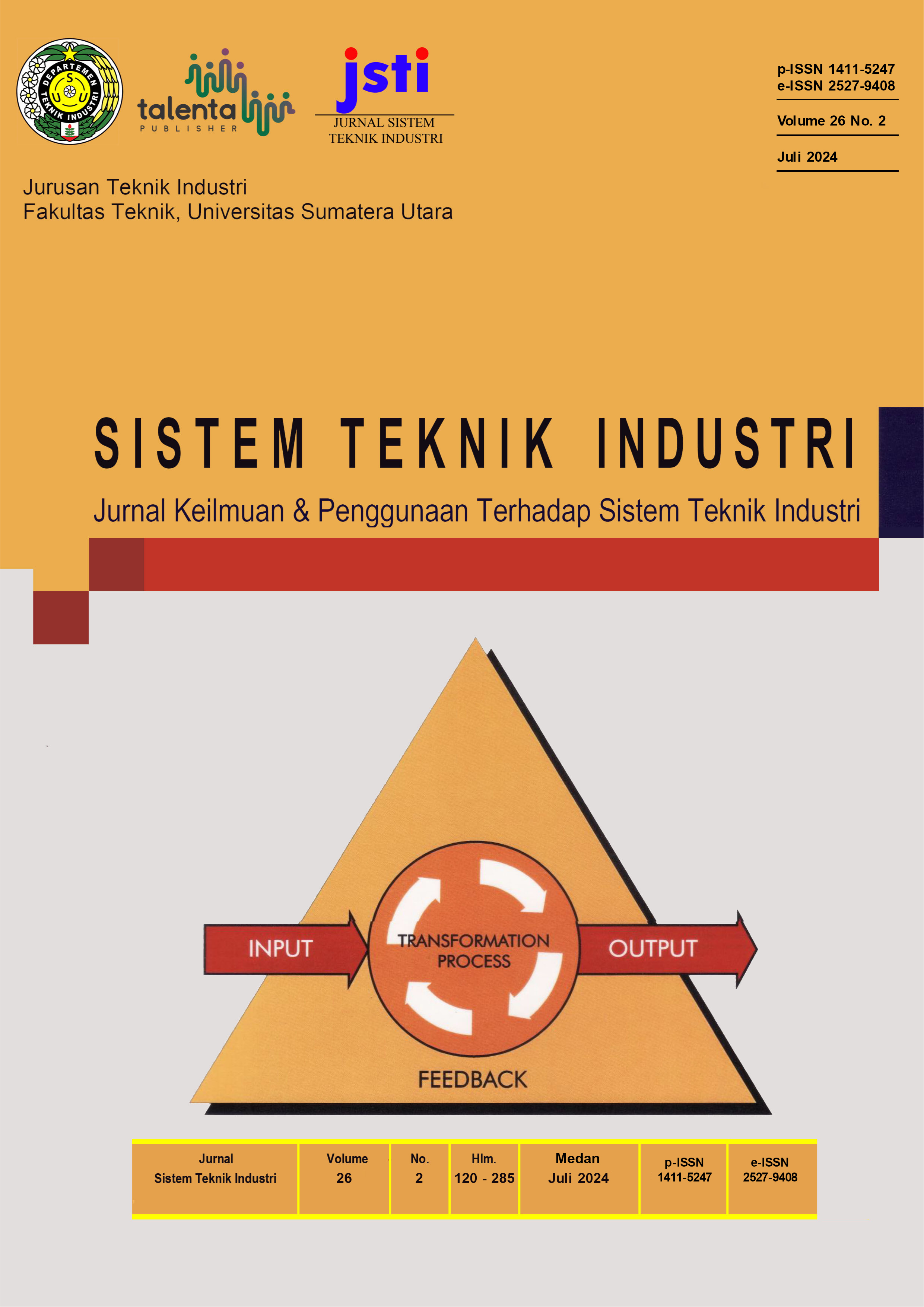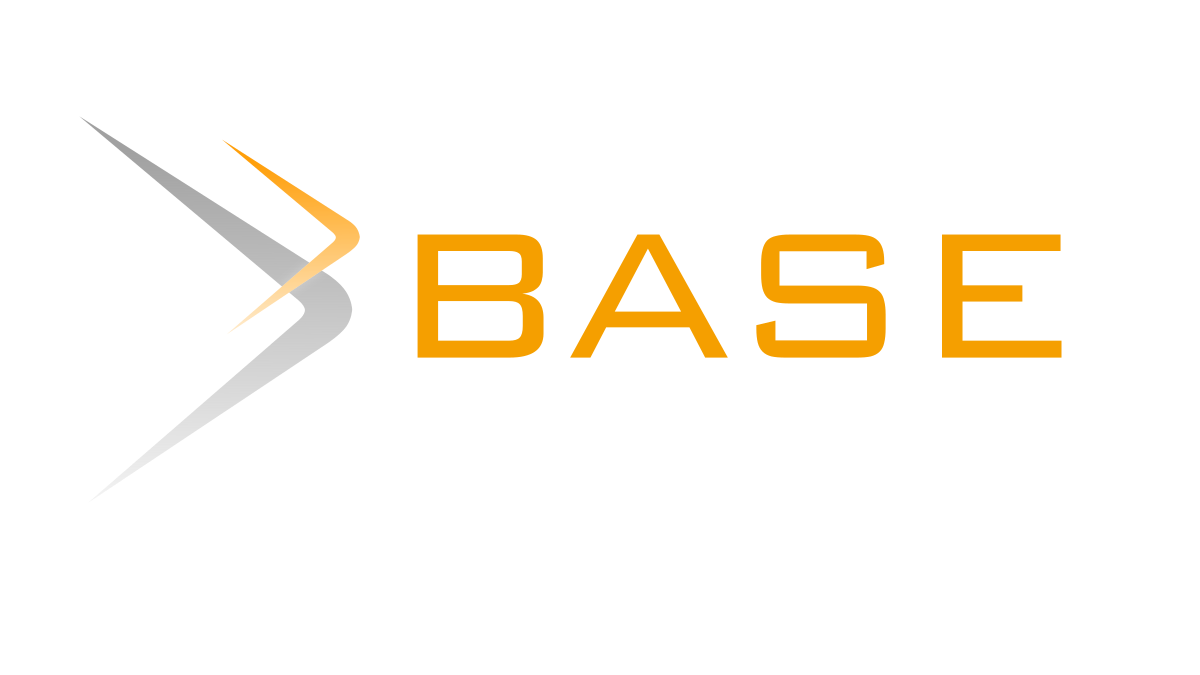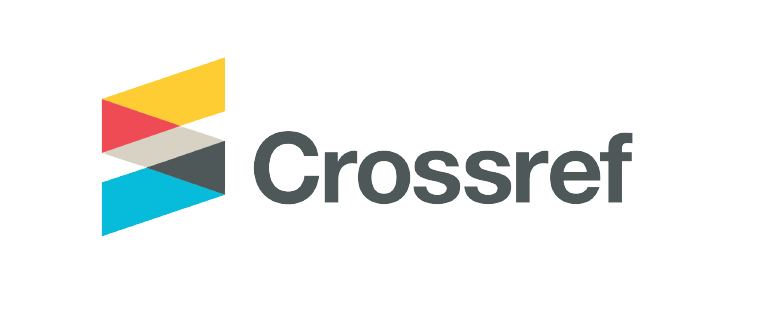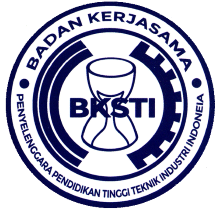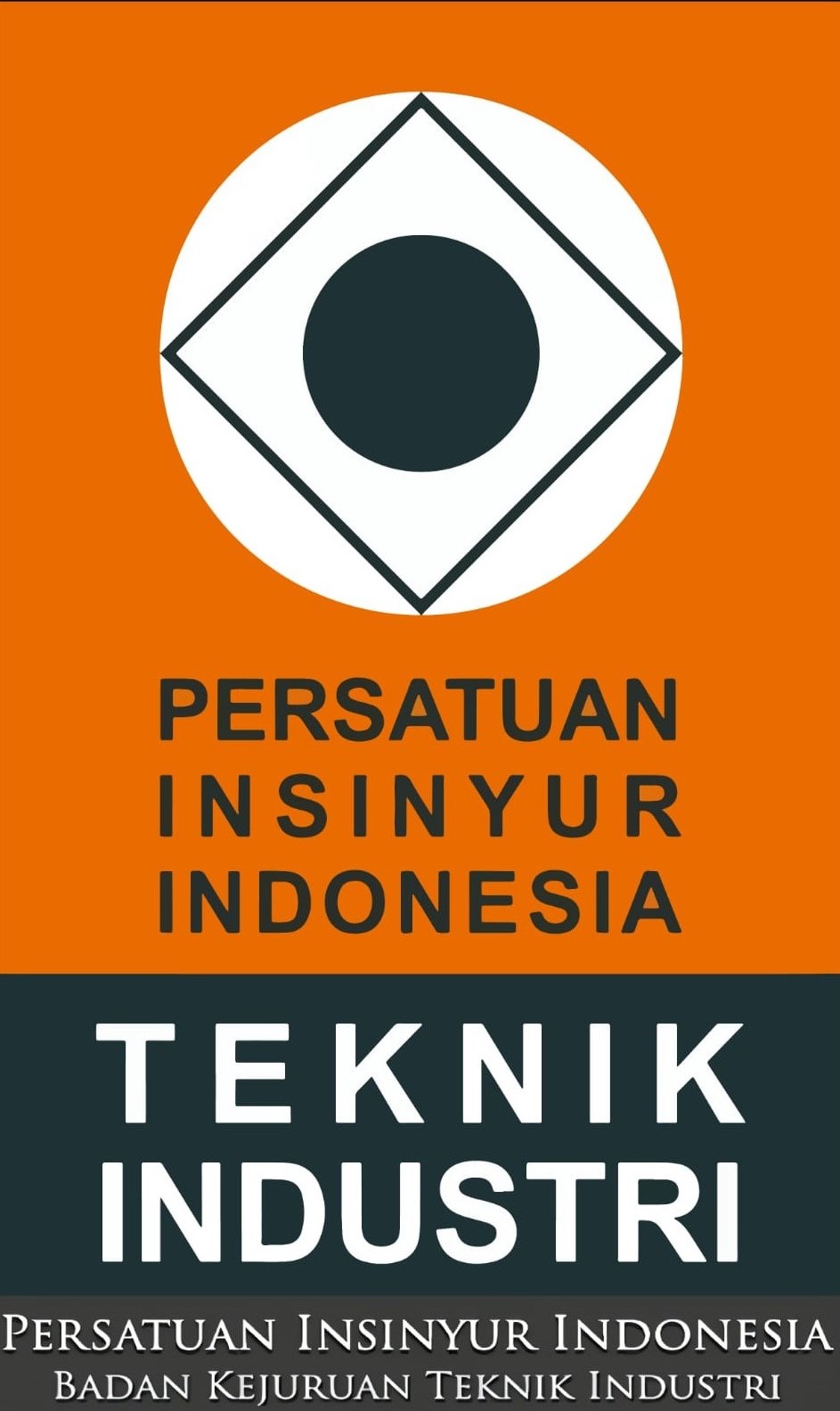Improving Resilience in Water Distribution Systems: An Application of the House of Risk Method at PDAM Gowa Unit Tompobulu
DOI:
https://doi.org/10.32734/jsti.v26i2.16171Keywords:
House of Risk, Mitigation Strategies, Resilience, Risk Management, Water DistributionAbstract
PDAM Gowa, a local government-owned company, plays a vital role in supplying clean water to the Tompobulu community in Gowa District. However, ensuring efficient and reliable water distribution poses challenges at the local and regional levels. This research focuses on enhancing the resilience of the water distribution system to mitigate various risks. The study utilizes the House of Risk (HOR) method for effective risk management and developing suitable mitigation strategies within PDAM's framework. The research identifies 10 risk events and 17 risk factors that affect water distribution in PDAM. Key risks include pipe leakage and supply disruptions. To mitigate these risks, the study proposes nine actionable recommendations for PDAM Gowa Unit Tompobulu. These recommendations involve regular maintenance of distribution infrastructure and equipment to ensure system quality and reliability. Additionally, improving pipe network condition monitoring, implementing leakage control policies, and fostering collaboration with stakeholders to address water supply disruptions are crucial mitigation measures. This research significantly contributes to understanding the risk management associated with water distribution in PDAM. By implementing the recommended mitigation strategies, PDAM Gowa Unit Tompobulu can reduce water distribution risks, enhance system efficiency, and provide improved clean water services to consumers. Moreover, the study has the potential to drive scientific progress and promote the development of best practices and technologies in the drinking water industry.
Downloads
References
D. Cannas, E. Loi, M. Serra, D. Firinu, P. Valera, and P. Zavattari, “Relevance of essential trace elements in nutrition and drinking water for human health and autoimmune disease risk,†Nutrients, vol. 12, no. 7. MDPI AG, pp. 1–22, Jul. 01, 2020. doi: 10.3390/nu12072074.
A. Wutich, A. Y. Rosinger, J. Stoler, W. Jepson, and A. Brewis, “Measuring Human Water Needs,†American Journal of Human Biology, vol. 32, no. 1, pp. 1–17, Jan. 2020, doi: 10.1002/ajhb.23350.
R. Prasetiawati, F. Nasution, and N. Lubis, “Efforts to Increase People’s Knowledge Through Counseling in Realizing Healthy Homes,†Abdi: Jurnal Pengabdian dan Pemberdayaan Masyarakat, vol. 4, no. 2, pp. 346–351, Nov. 2022, doi: 10.24036/abdi.v4i2.336.
H. A. Awaad, E. Mansour, M. Akrami, H. E. S. Fath, A. A. Javadi, and A. Negm, “Availability and feasibility ofwater desalination as a non-conventional resource for agricultural irrigation in the MENA region: A review,†Sustainability (Switzerland), vol. 12, no. 18. MDPI, pp. 1–14, Sep. 01, 2020. doi: 10.3390/su12187592.
B. S. Rathi, P. S. Kumar, and D. V. N. Vo, “Critical review on hazardous pollutants in water environment: Occurrence, monitoring, fate, removal technologies and risk assessment,†Science of the Total Environment, vol. 797, no. 149134, pp. 1–22, Nov. 2021, doi: 10.1016/j.scitotenv.2021.149134.
R. S. Kookana, P. Drechsel, P. Jamwal, and J. Vanderzalm, “Urbanisation and emerging economies: Issues and potential solutions for water and food security,†Science of the Total Environment, vol. 732, no. 139057, pp. 1–14, Aug. 2020, doi: 10.1016/j.scitotenv.2020.139057.
I. Putra, H. Hermawan, and A. F. Wijaya, “Public-Private Partnership (PPP) to Improve the Drinking Water Supply System: A Study on the Regional Government of East Java Province,†2022. [Online]. Available: http://journalppw.com
H. M. Ramos, A. Carravetta, and A. Mc Nabola, “New challenges in water systems,†Water (Switzerland), vol. 12, no. 9. MDPI AG, pp. 1–13, Sep. 01, 2020. doi: 10.3390/W12092340.
K. B. Adedeji and Y. Hamam, “Cyber-physical systems for water supply network management: Basics, challenges, and roadmap,†Sustainability (Switzerland), vol. 12, no. 22, pp. 1–30, Nov. 2020, doi: 10.3390/su12229555.
K. Ali, R. N. Rizky, and A. Ulayya, “Service Quality Analysis of the Regional Drinking Water Company (PDAM) Tirta Sejuk Against the Need for Clean Water in Blangkejeren,†PERSPEKTIF, vol. 13, no. 1, pp. 51–59, Jan. 2024, doi: 10.31289/perspektif.v13i1.10491.
M. Salehi, “Global water shortage and potable water safety; Today’s concern and tomorrow’s crisis,†Environ Int, vol. 158, no. 106936, pp. 1–7, Jan. 2022, doi: 10.1016/j.envint.2021.106936.
M. K. Jha, A. Shekhar, and M. A. Jenifer, “Assessing groundwater quality for drinking water supply using hybrid fuzzy-GIS-based water quality index,†Water Res, vol. 179, no. 115867, pp. 1–16, Jul. 2020, doi: 10.1016/j.watres.2020.115867.
A. I. Mayrazaka, R. D. Priantana, and S. Sayuthi, “Analysis of Determination of Production Costs and Full Cost Recovery (a Case Study at PDAM XYZ Banda Aceh City),†Formosa Journal of Applied Sciences, vol. 3, no. 1, pp. 311–328, Feb. 2024, doi: 10.55927/fjas.v3i1.7636.
E. Kusrini, K. N. Safitri, and A. Fole, “Design Key Performance Indicator for Distribution Sustainable Supply Chain Management,†in 2020 International Conference on Decision Aid Sciences and Application, DASA 2020, Institute of Electrical and Electronics Engineers Inc., Nov. 2020, pp. 738–744. doi: 10.1109/DASA51403.2020.9317289.
L. M. Dang et al., “Fifth generation district heating and cooling: A comprehensive survey,†Energy Reports, vol. 11. Elsevier Ltd, pp. 1723–1741, Jun. 01, 2024. doi: 10.1016/j.egyr.2024.01.037.
M. Haekal and P. Tiningsih, “Performance Evaluation of Water Supply Company (PDAM) in Depok,†European Journal of Business and Management Research, vol. 5, no. 2, pp. 1–5, Mar. 2020, doi: 10.24018/ejbmr.2020.5.2.262.
C. A. M. Ãvila, F. J. Sánchez-Romero, P. A. López-Jiménez, and M. Pérez-Sánchez, “Leakage management and pipe system efficiency. Its influence in the improvement of the efficiency indexes,†Water (Switzerland), vol. 13, no. 14, pp. 1–25, Jul. 2021, doi: 10.3390/w13141909.
I. Darwis, M. Selintung, B. Bakri, and Y. Arai, “The Infrastructure Performance of Wajo Regency’s Regional Water Company Based on Costumer’s Perceptions,†in IOP Conference Series: Earth and Environmental Science, IOP Publishing Ltd, Sep. 2021, pp. 1–11. doi: 10.1088/1755-1315/841/1/012033.
T. M. Kamaludin, A. Rusdin, Nirmalawati, A. Fadjar, and A. Wahab, “Risk Management in the Development of a Regional Drinking Water Supply System,†in IOP Conference Series: Earth and Environmental Science, Institute of Physics, 2022, pp. 1–11. doi: 10.1088/1755-1315/1075/1/012038.
W. Spalanzani, U. Ciptomulyono, M. Suef, Asmuddin, and Salwiah, “Fault tree and decision making trial and evaluation laboratory model for formulating risk mitigation strategies at water production process of PDAM Baubau,†in AIP Conference Proceedings, American Institute of Physics Inc., Apr. 2020, pp. 1–9. doi: 10.1063/5.0000750.
Y. Herdianzah, “KRI Design and Mitigation Strategy on Water Distribution of Perumda Air Minum Makassar Regional IV: A Case Study,†Journal of Industrial Engineering Management, vol. 5, no. 2, pp. 70–79, Nov. 2020, doi: 10.33536/jiem.v5i2.672.
A. Fole, “Designing a Risk Mitigation Strategy for CV. JAT Business Processes Using the House of Risk Method,†2023. doi: 10.58227/jiei.v1i02.109.
E. Kusrini, K. N. Safitri, and A. Fole, “Risk Mitigation In Distribution Sustainable Supply Chain Management Using The Method Of House Of Risk (HOR),†Yogyakarta, Apr. 2022. doi: 10.32502/js.v7i1.4348.
A. Negm, X. Ma, and G. Aggidis, “Review of leakage detection in water distribution networks,†in IOP Conference Series: Earth and Environmental Science, Institute of Physics, 2023, pp. 1–14. doi: 10.1088/1755-1315/1136/1/012052.
N. Mashhadi, I. Shahrour, N. Attoue, J. El Khattabi, and A. Aljer, “Use of machine learning for leak detection and localization in water distribution systems,†Smart Cities, vol. 4, no. 4, pp. 1293–1315, Dec. 2021, doi: 10.3390/smartcities4040069.
S. Zhai, B. Gehring, and G. Reinhart, “Enabling predictive maintenance integrated production scheduling by operation-specific health prognostics with generative deep learning,†J Manuf Syst, vol. 61, pp. 830–855, Oct. 2021, doi: 10.1016/j.jmsy.2021.02.006.
Q. Deng, B. F. Santos, and R. Curran, “A practical dynamic programming based methodology for aircraft maintenance check scheduling optimization,†Eur J Oper Res, vol. 281, no. 2, pp. 256–273, Mar. 2020, doi: 10.1016/j.ejor.2019.08.025.
Downloads
Published
How to Cite
Issue
Section
License
Copyright (c) 2024 TALENTA Publisher Universitas Sumatera Utara

This work is licensed under a Creative Commons Attribution-ShareAlike 4.0 International License.
The Authors submitting a manuscript do so on the understanding that if accepted for publication, the copyright of the article shall be assigned to TALENTA Publisher Universitas Sumatera Utara as the publisher of the journal.
Copyright encompasses the rights to reproduce and deliver the article in all forms and media. The reproduction of any part of this journal, its storage in databases, and its transmission by any form or medium will be allowed.

